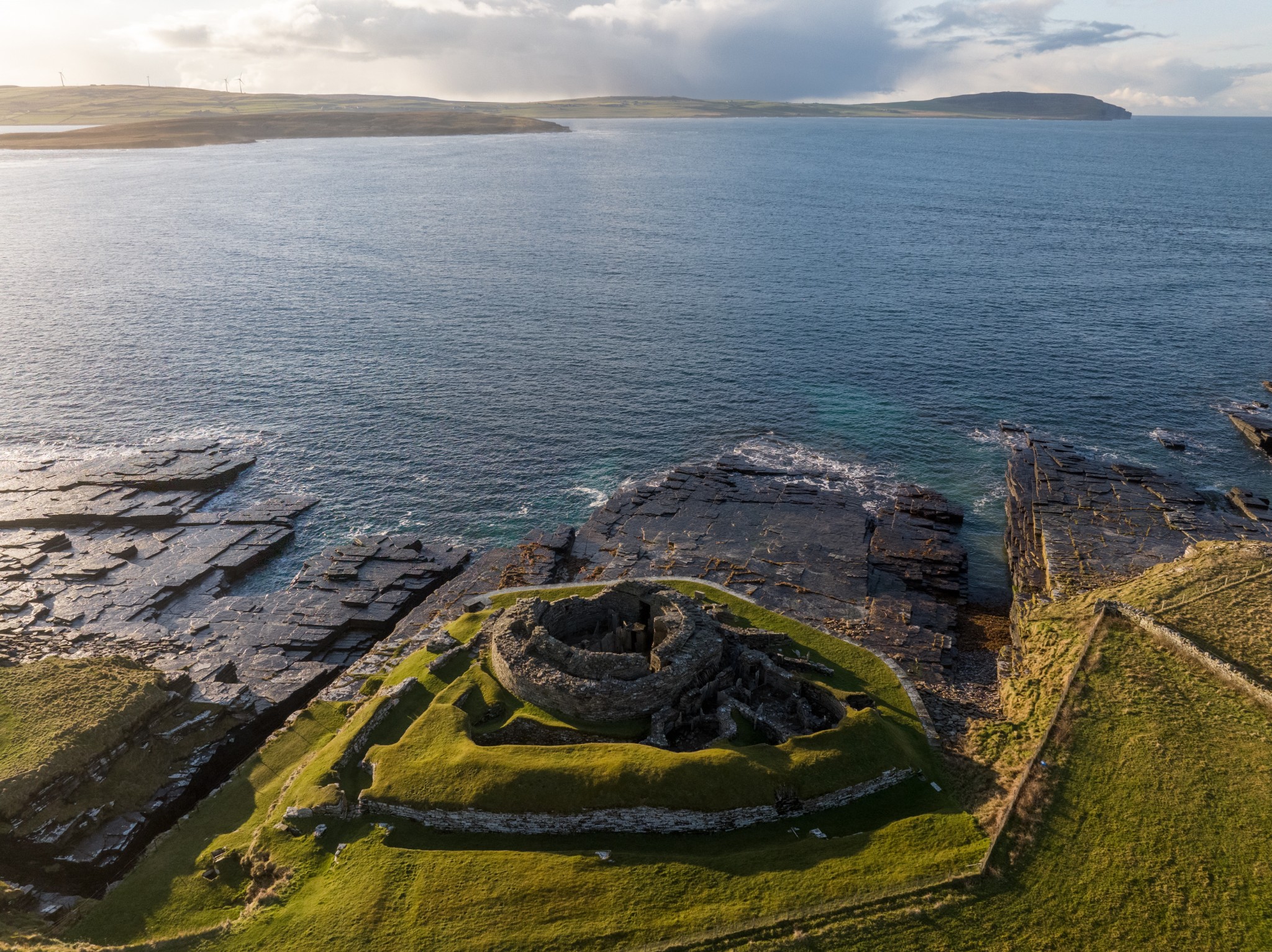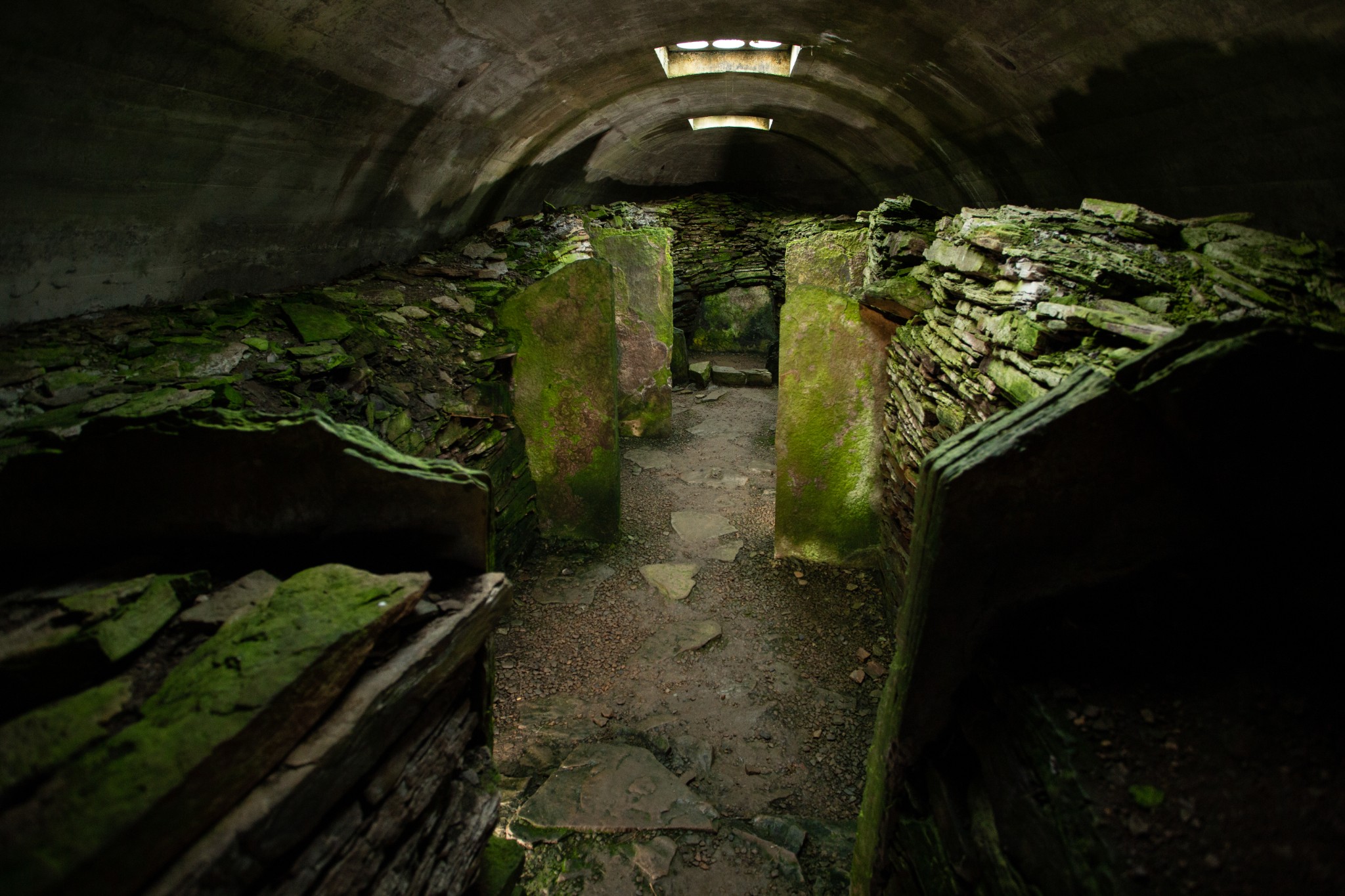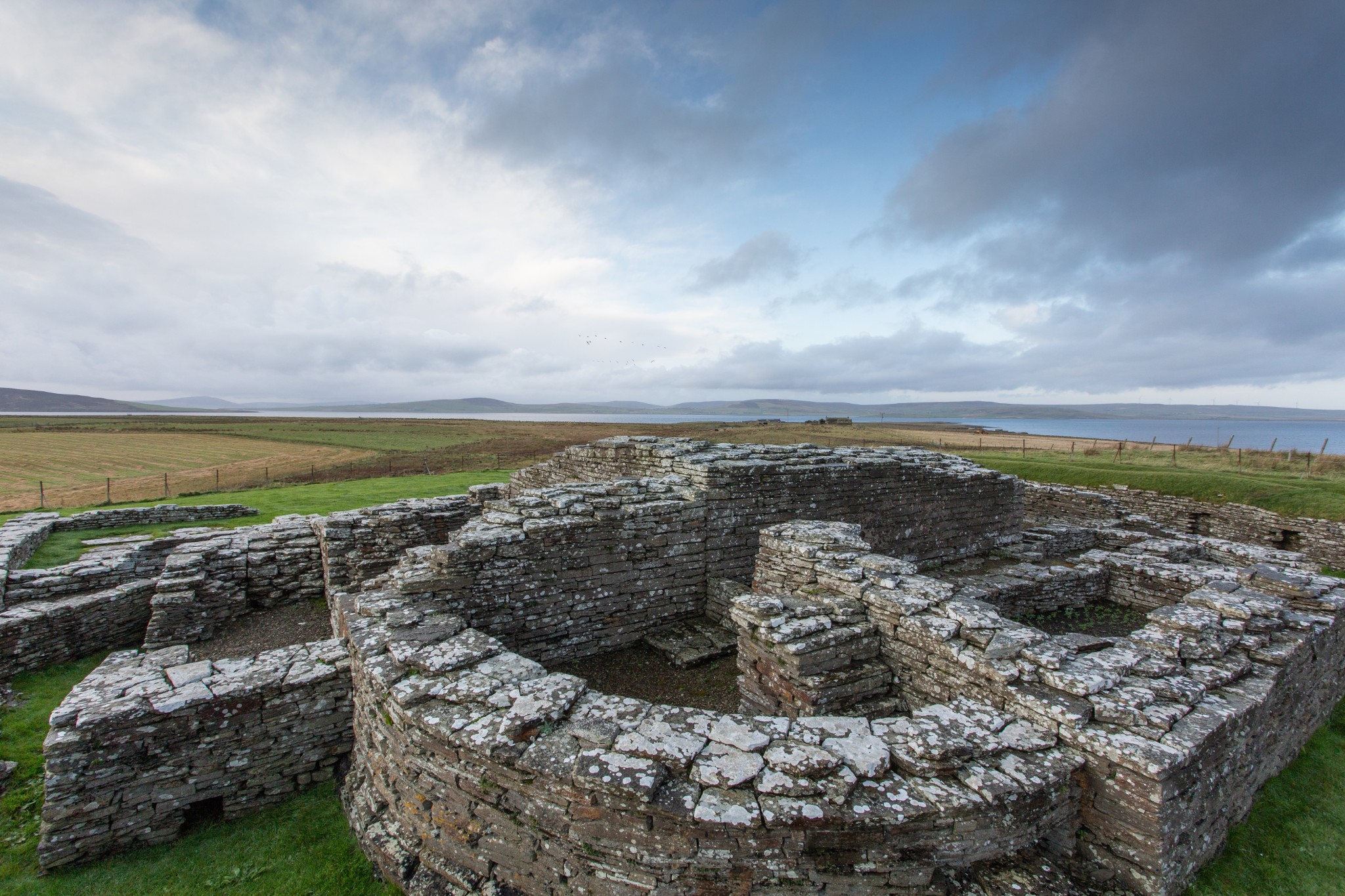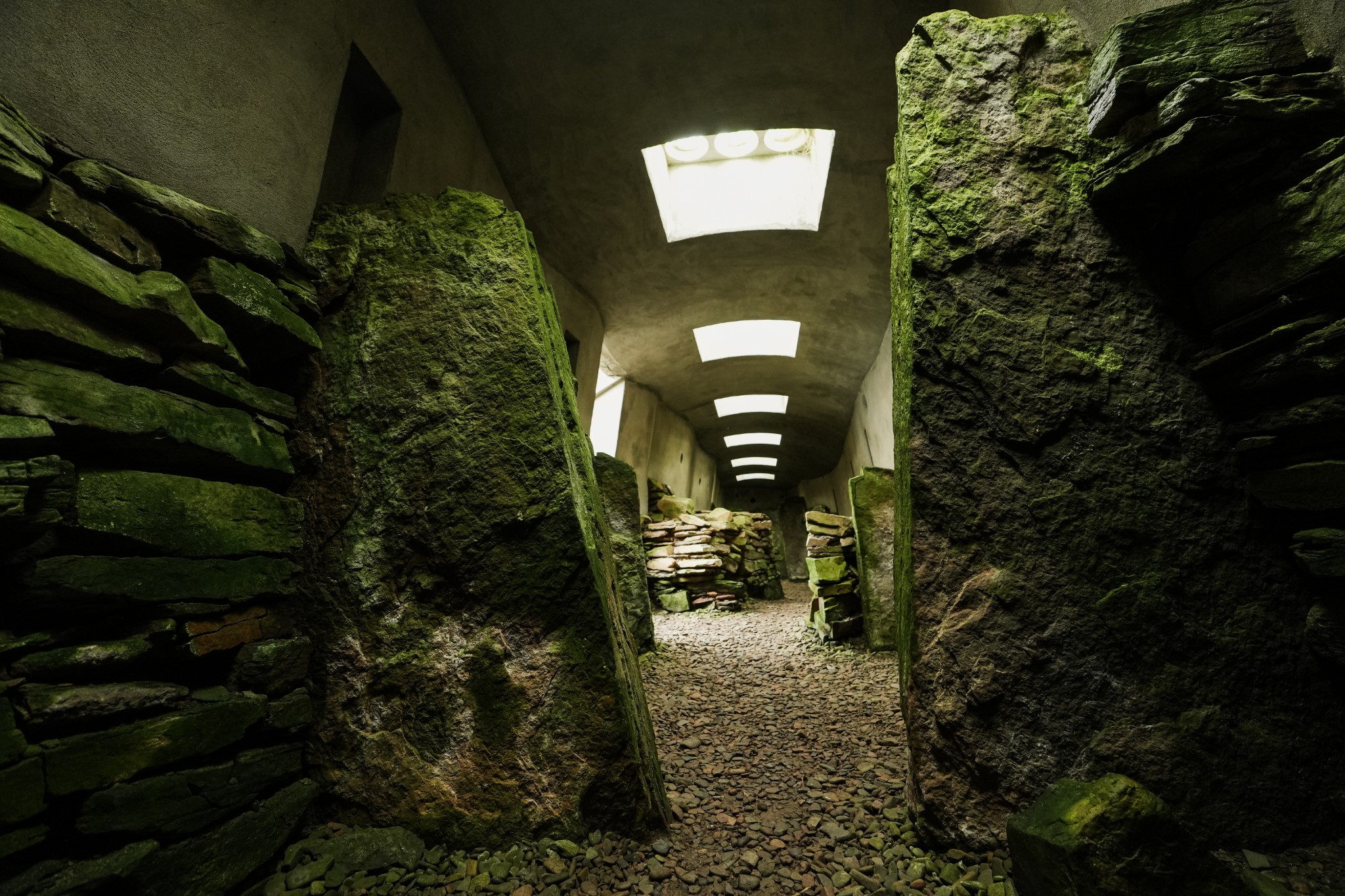Rousay, Egilsay & Wyre can sometimes be overlooked when it comes to Orkney’s most popular destinations. The truth is, however, these neighbouring communities are perfect for island-hopping and are full of incredible locations to explore.
From Neolithic cairns right through to Viking strongholds, these isles have played an important part in Orcadian history. Here are seven sites not to miss if you’re taking a trip back in time in Rousay, Egilsay & Wyre.
This impressive Iron Age structure is one of the finest of its kind in Scotland. Its setting is no less spectacular, surrounded by great slabs of rock, geos, and the constant crash of waves. Midhowe is just one of a network of brochs, including the Broch of Gurness across Eynhallow Sound on the mainland, suggesting the area was of great importance around 2000-years-ago. Visiting Midhowe is real treat, with the broch still standing in good condition and many fixtures and fittings remaining.
Visitors should note that the walk here from the car park is quite steep and may not be suitable for folk with limited mobility.
One of Orkney’s highest burial chambers, the Knowe of Yarso is perched on the hillside in Rousay, overlooking Eynhallow Sound and the Orkney mainland beyond. This Neolithic tomb was first excavated in the 1930s and the remains of nearly 30 people were discovered inside. Some of the skulls were lined up side-by-side, as seen in other similar sites in Orkney. Pottery and flint were also found here, suggesting the stalled cairn may have been in use for some time after it was built around 5000 years-ago.
Egilsay has a central role in one of Orkney’s most famous historical moments. St Magnus was murdered here more than 900 years ago, and this special kirk stands as a marker to the influence of Norse rule across the islands. Built in the 12th century, this is arguably the finest surviving Norse church of its kind in Scotland, matched only by similar buildings in England and Germany. Its tall, round tower originally stretched around 70 feet into the sky, ensuring it was seen from all around.
All of Orkney’s Neolithic chambered cairns are special, but this one is particularly unique. The Taversoe Tuick is a rare example of a two-storey cairn with one burial chamber on top of another. It was first discovered in the late 1800s before a full excavation took place nearly forty years later. Human remains were found in both chambers alongside pottery shards. The cairn originally had two entrances – one for each chamber – but these days an entrance hatch provides access, with a ladder in place so visitors can reach the lower section.
Ominously known as the ‘Great Ship of Death’, the sheer scale of this tomb is impossible to appreciate until you visit. Built 5000-years-ago, Midhowe was excavated in the 1930s when the remains of at least 25 people were found. The huge, 32-metre-long structure is covered by a modern hanger for protection, with the added bonus of suspended walkways inside, offering a bird’s eye view of the ancient building below.
Visitors should note that the walk here from the car park is quite steep and may not be suitable for folk with limited mobility.
The former home of a Norse chieftain, this once great structure was built around 1145. The stronghold belonged to a Viking named Kolbein Hruga and was originally thought to be three storeys high. The walls are two metres thick in places, showing that defence was very much the order of the day. Historians believe Hruga’s base never came under attack, but it was finally abandoned in the early 16th century. These days it’s a perfect place to experience Orkney’s Norse heritage.
This fine example of a Neolithic chambered cairn is set back from the main road in Rousay on a steep slope. Accessed by ladder, visitors will find stalls and decorative stonework, which matches patterns found at other ancient sites in Orkney. Excavations here in the 1930s uncovered two male skeletons and fragments of animal bone, as well as a polished stone axe.






